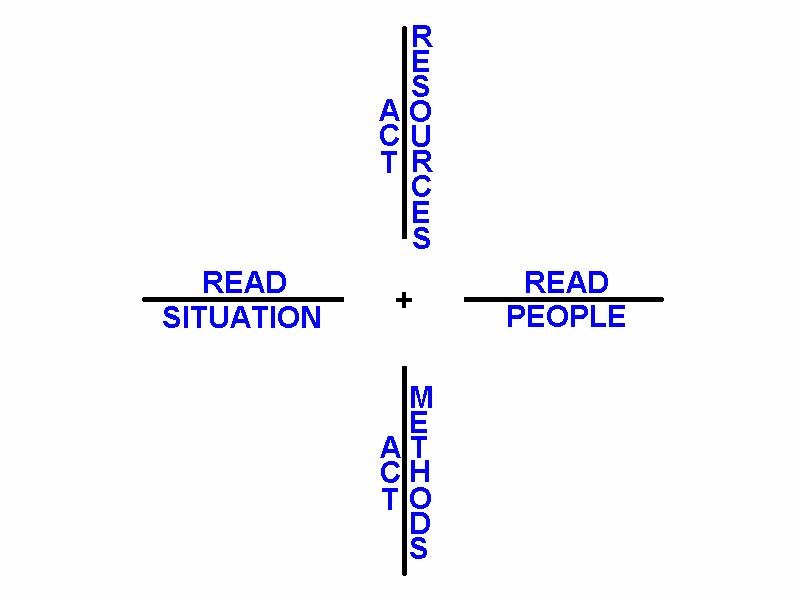

| ReadAct Difference |
| About
ReadAct |
| Interactive Solutions |
| Advanced Interactive Solutions |
| Services |
| FAQ |
| Discussion |
| Results |
| Links |
| Contact Us |
| Home |
ReadAct Behaviors (the scope for sighting in, aiming, and focusing your effort.) What you must do as a leader, manager, problem solver or decision maker, while it appears to be very complex, does resolve itself down to two factors.
John Stogdill, PhD, in his magnum opus on leadership bemoaned in his introduction that leadership is too complex to allow for any clear answers or understanding. Yet in his text a research project which factor analyzed leadership found that it is clearly a two factor phenomenon. That is when all the findings of multitudes of studies were put through the statistical grinder of factor analysis a clear and powerful result was that there are two factors involved in "doing leadership" and they were named in that study as CONSIDERATION and INITIATING STRUCTURE. The process of factor analysis is wondrous in its magic to tease out and measure the "influence" and "weight" of factors, but the process of naming the resulting factors is somewhat arbitrarily done after the fact. Please indulge this reinterpretation by the author of ReadAct who clearly chose to apply the simpler terms Read and Act provided by Gus Economos (see History) as the exact and precise equivalents of Consideration and Initiating Structure as found in Stogdill.
You may therefore trust ReadAct as a comprehensive formula which is the two factor combination of behaviors needed to lead, manage, decide and solve.
Within the two overarching behaviors further experience with Economos's terms Read and Act brought forth clearly that Read Skills for Situation and People are not automatically linked. There are many people who's skills for each are quite independently developed and often of varying levels. Someone could easily be Big "R" (have a well developed) capacity to Read Situations, and at the same time be Little "r" (have a less well developed) capacity to Read People. And vice versa. While it is possible to develop both skills to a high level, there seems to be a widespread array of varied combinations of these two Read skills in the population of observed leaders. There is even a kind of humor that identifies the stereotypical Read Situation Big "R" and Read People Little "r" individual as an Engineering Mentality. So we know from observation that both are important and both ought to be developed, but they develop independently from each other.
Similarly Act skills to implement Methods and apply Resources seem to come in the same array of variability. Some are good at both, one or the other or neither. Since both skills are important and necessary and both ought to be developed and applied the model creates the distinction and places the four sets of skills on the two Read and Act dimensions.

THE ReadAct SCOPE
The four skills are also the behavioral answer to the classic questions of factual inquiry: Who? What? When and Where? and How?
Here then is how the ReadAct MODEL answers each important question.
WHO? READ the PEOPLE.
WHAT? ACT with the RESOURCES.
WHEN and WHERE? READ the SITUATION.
HOW? ACT with METHODS.
This leaves the all important philosophical question Why? It is answered not with the ReadAct behaviors or skills, but with the carefully specified Target of Desired Outcomes.
WHY? The Target of QUALITY DESIRED OUTCOMES.